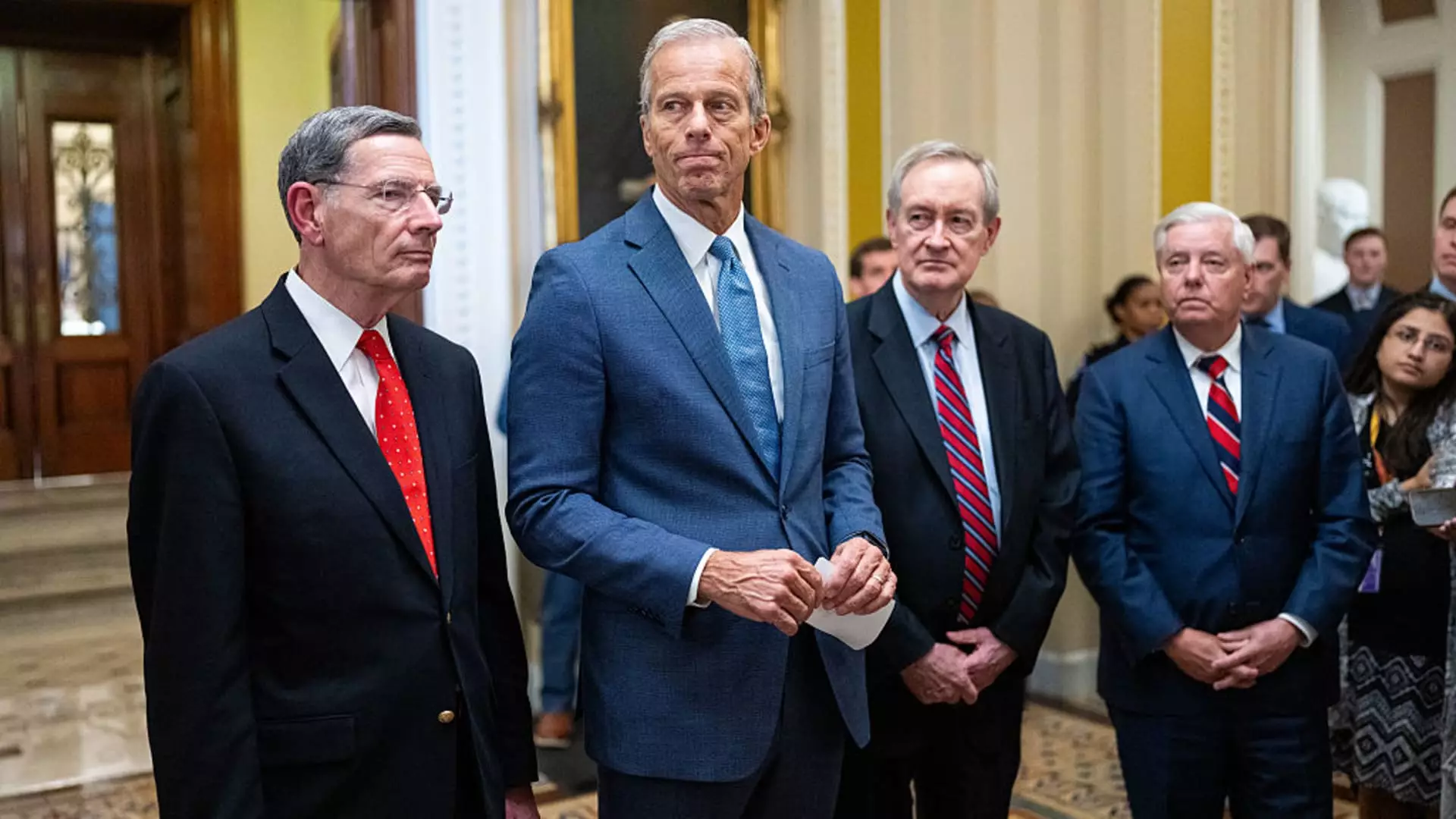In recent days, the Republican-led Senate celebrated a significant legislative milestone: the passage of a sweeping tax cut package. At first glance, such measures invoke promises of economic growth, increased disposable income, and a renaissance of American prosperity. But beneath this veneer lies a startling reality—these tax incentives are disproportionately skewed to benefit the wealthy while leaving the working class to drown in the resulting fiscal disparities. The narrative spun by proponents often paints tax cuts as a universal boon, yet a rigorous analysis reveals a far more troubling picture—one of systemic favoritism and economic misdirection.
The touted benefits, like deductions on auto loans, tips, and retirement-related expenses, are crafted with the illusion of broad applicability. But in truth, these deductions largely serve higher-income households who can leverage such incentives effectively. For low-wage workers, especially those earning below the standard deduction threshold, these targeted tax breaks are essentially meaningless. Their limited taxable income diminishes or outright eliminates the potential advantage, perpetuating the cycle where those who need help least stand to gain the most—an enduring irony of American fiscal policy.
The Fine Print: Who Truly Benefits from These Tax Breaks?
While the legislation introduces deductions allowing householders to decrease taxable income on auto loans, tips, and senior expenses, these benefits come with crucial limitations—chiefly income restrictions and temporal applicability. For example, auto loan interest deductions require substantial loan amounts—an improbable scenario for the average car buyer. Likewise, tips and overtime pay deductions are almost inaccessible to the majority of tipped workers, a significant portion of whom earn below the taxable threshold altogether. These generous-sounding incentives are, in reality, tailored for those with the financial means to exploit them comprehensively.
Furthermore, the structure of deductions plays favorably into the hands of higher-income households due to progressive tax brackets. Each dollar deducted is more valuable proportionally to those in higher brackets. For someone in the 37% bracket, a single dollar saved on taxes equates to a 37-cent benefit, whereas at the 10% level, it’s merely a 10-cent advantage. This built-in asymmetry ensures that the wealthier—those who already hold the most—stand to benefit the most from these tax breaks, while those earning less see minimal gains or none at all.
The legislation also relies on “above-the-line” deductions, which are available regardless of whether the taxpayer itemizes deductions or takes the standard deduction. Ironically, this favors higher-income households who are more likely to itemize due to larger mortgage interest or state and local tax deductions. Meanwhile, lower-income families are largely shielded from significant benefits because they primarily claim the standard deduction, which these new breaks do not supplement.
Tax Credits Versus Deductions: A Telling Distinction
While deductions merely reduce taxable income and favor higher earners, tax credits represent a more equitable mechanism—providing dollar-for-dollar reductions regardless of income level. Yet, even here, the legislative focus remains biased. The child tax credit and earned income tax credit are set to see incremental improvements, but millions of children from low-income families remain deprived of full benefits because their families don’t owe enough in taxes to fully utilize these credits.
Moreover, the structure of refundable versus nonrefundable credits highlights the disparity. Refundable credits can provide tangible refunds to those with little or no tax liability, but their partial or full limitation means many impoverished families are still left behind. With the current structure, the system continues rewarding those with a stable income and penalizing the most vulnerable—people who earn just enough to not qualify for substantial credits or deductions.
This skewed approach reinforces existing inequalities; it does not address the root causes of economic hardship. Instead, it offers superficial relief that perpetuates the illusion of fairness—an illusion that diminishes the potential for meaningful change.
The Larger Implication: A Retreat from Fairness and Equality
The overarching consequence of such legislation extends beyond individual tax returns. It encapsulates a broader ideology that champions tax cuts as a one-size-fits-all remedy, ignoring the nuanced realities of income inequality and social mobility. The fact that these reforms are temporary and laden with restrictions underscores their superficiality—they are band-aids atop a system that fundamentally favors the wealthy.
This approach distracts from the vital need to reform structural inequities—such as education, healthcare, and wage stagnation—that trap working Americans in cycles of poverty. It subtly shifts focus from substantive policy change toward superficial fiscal giveaways, which, while politically palatable, ultimately deepen the divide between the rich and the poor.
The legislative landscape crafted by this bill signals a troubling priority: maintaining a status quo where wealth accumulates at the top under the guise of fostering economic growth. Instead of addressing systemic issues, it cynically cloaks beneficence in the language of “tax relief,” revealing a political calculus rooted more in appeasing the affluent than in fostering genuine equality.
The reality remains clear: unless a fundamental shift occurs—toward progressive taxation, equitable access to benefits, and systemic reform—these tax cuts serve only to entrench the inequalities they purport to reform. In the end, it’s a sobering reminder that policy rhetoric often masks a deeper bias—one that favors privilege over fairness, and the wealthy over the working class.

